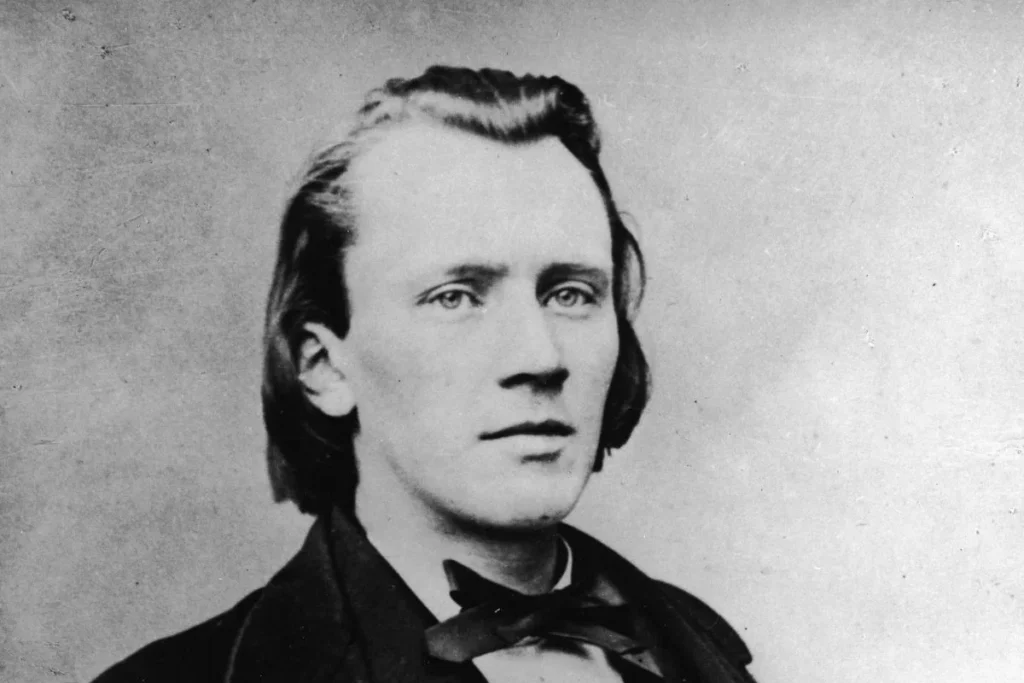Johannes Brahms: The Romantic Composer who Presented a Base Between Old and new Things
Have you ever raised a question about how a composer can respect the past but invent something new and full of feelings? This equilibrium was achieved by one of the greatest composers of Romantic music Johannes Brahms. His music is the harmony of classical masters, Beethoven and Bach, and it is full of feeling and the Romanticism, which makes his music pieces everlasting void.
Being a classical music fan or simply interested in the life of a man that created such beautiful compositions as the German Requiem and the Hungarian Dances, you will discover with the help of this article the life journey of Brahms himself, his most well-known works and his eternal contribution to music. Here we are going to plunge into the world of Johannes Brahms clearly, interestingly and easily.
Table of Contents
Johannes Brahms Biography: Much History and an Amazing Genius from the Beginning!
Born on May 7, 1833, in an ordinary musical family (the father was a double bassist) Johannes Brahms appeared in the city of Hamburg, Germany. Brahms was an extremely gifted child, according to the work, started to play piano at the age of seven and at eleven he was even earning money playing in taverns and inns of the town, to sustain his family.
Brahms had a revolutionary experience in 1853 which turned his life around as he came across Robert and Clara Schumann. One renowned composer and a critic Robert instantly recognized the geniusness of Brahms and officially declared him a genius by the name of a young eagle, and his career was launched. Brahms later transferred to Vienna in 1869, where he lived out his life as one of the main figures in the music world till 1897 when he died.
Johannes Brahms Johannes Brahms has been referred to as the Romantic composer who offered a middle ground at old and new things.
Have you ever asked yourself how a composer may respect the past and create something new and have feelings? This balance was attained by one of the best composers of Romantic music Johannes Brahms. His songs are the melodies of the classical geniuses, Beethoven and Bach and it is quite emotional and full of Romanticism, so his songs sound indefatigable blank.
As a fan of the classical music or just a reader that would like to find out the lifestyle of a man that has made such masterpieces as the German Requiem or the Hungarian Dances you will learn with the help of this article the life story of Brahms himself, his most famous music and his legacy to music which will never be forgotten. This is where we are going to dive into the very world of Johannes Brahms clearly, interestingly and easily.
Biography Johannes Brahms: A Lot of History and Wonderful Genius Since Birth!
The composer Johannes Brahms was born on 7 May 1833 in a normal musical family (the father worked as a double bassist) in the city of Hamburg, Germany. Brahms was a very special child that, based on the work, commenced playing the piano at seven years of age and at the tender age of eleven, he was already making money at the pubs and inns of the town to keep his family alive.
In the year 1853, Brahms underwent a revolutionary moment that changed his life by discovering Robert and Clara Schumann. It was the work of one famous composer and a critic Robert who quickly saw the geniusness of Brahms and gave him the official title of a genius in honor of a young eagle and his career began. Later, Brahms went to Vienna in 1869 and spent the rest of his life on the account of being one of the central people in music until he passed away in 1897.
Brahms Symphony: Orchestral Music Masterworks
Brahms is also famous with the four symphonies that are the landmarks of Romantic orchestral music. His Symphony no. 1 Brahms in C minor, Op. 68 has been termed as Beethoven’s tenth due to its strong classical nature and musical fervor. Brahms took more than 10 years to finish and this was an indication of his perfectionism and appreciation towards his predecessor and also the Beethoven legacy.
In his other symphonies, No. 2 D Major, No. 3 F Major, and No. 4 E Minor, he displays a variety of moods between the joyful lyricism and deep tragedy, simultaneously retaining the classical form with the richness of Romanticism expression.
Chamber Music and Orchestral Work by Brahms Compositions
The work of Brahms represents a huge collection of chamber music and orchestral music. His chamber music, including the String Quartets, the Clarinet Quintet and the Piano Quartets, is renowned as being richly textured and emotional. The B Minor Clarinet Quintet, Op. 115 is particularly praised for its autumnal tone.
Besides symphonies, in orchestral music Brahms composed concertos and overtures, with such concert hall mainstays as the Academic Festival Overture, Op. 80 and the Tragic Overture.
Brahms Lullaby: The Well-known Wiegenlied
Brahms Wiegenlied or Brahms Lullaby is one of the most popular works of Brahms. This soft, quiet song has been used as one of the most popular lullabies of generations and it is so well known. This is a powerful demonstration of the simplicity of its beauty; it is a simple music that speaks about melody and emotional touch that Brahms had as a gift. It is a popular music piece that no longer belongs to the classical world only.
Brahms Piano Concerto: Excellence and Meaning
Two piano concertos were composed by Brahms and the Brahms Piano Concerto No. 2 in B-flat Major, Op. 83 is one of the most lyrical piano concertos that pose a technical challenge. It has an opening movement in a slow, expressive style which is not common to many concertos of the era and a scherzo that exercises the rhythmic energies of Brahms. Today this Concerto is popular both with pianists and listeners.
German requiem: Brahms Requiem
German Requiem (Ein deutsches Requiem), Op. 45 is one of the most serious works of Brahms. By comparison with the classical Latin requiems, the text of the piece written by Brahms is based on the German bible, but it is more about consolation of the living man, but not about the prayers to the dead. It created Brahms reputation as an international composer when premiered in 1868 and it is part of the basic choral music.
Brahms Piano Concerto: Virtuosity and Depth
Brahms composed two piano concertos, with the Brahms Piano Concerto No. 2 in B-flat Major, Op. 83 standing out for its lyrical beauty and technical demands. Unlike many concertos of the time, it features a slow, expressive opening movement and a scherzo that showcases Brahms’s rhythmic vitality. This concerto remains a favorite among pianists and audiences alike.
Brahms Requiem: The German Requiem
One of Brahms’s most profound works is the German Requiem (Ein deutsches Requiem), Op. 45. Unlike traditional Latin requiems, Brahms’s piece uses texts from the German Bible, focusing on comfort for the living rather than prayers for the dead. Premiered in 1868, it established Brahms’s international reputation and remains a cornerstone of choral music.
Brahms Hungarian Dances- Folk Inspirations
Hungarian Dances Composed by Brahms are jovial music, incorporating rhythm and drawing their motivation on the Hungarian folk music. They were orchestrated and became very popular, originally composed as piano four hands. Such dances show the skills of Brahms to combine folk style with classical composition, bringing colors and life to his works.
Art songs: Brahms Lieder
Brahms wrote more than 200 Lieder (art songs) (music to German poetry) with essential emotional understanding. The songs necessarily treat love, nature, and yearning and in them Brahms has displayed his talent as a melodist and his awareness of the text. His Op. 121 Four Serious Songs belong to his deepest vocal music.
Brahms Chamber music: String Quartets and Clarinet Quintet
The chamber music by Brahms is regarded as one of the most complicated and emotionally loaded music. His String Quartets and his Clarinet Quintet in 4 and his String Quartets in 3 are masterworks combining classical quartet-form with Romantic free expression. Lyrical and reflective, the Clarinet Quintet has been observed as one of the pieces written later in his life.

Brahms The Romantic Composer
Brahms is a very typical Romantic composer though he is deep-rooted in classical tradition. On the one hand, his music is passionate and full of emotion, on the other, it is very disciplined, full of form. Brahms did not reject the approach toward classical forms as some Romantics did; he rather filled it with new harmonic and rhythmic concepts.
Brahms and Classical tradition: Beethoven and Bach
Brahms idolized the classical tradition, in particular, the work of Beethoven and Bach. The influence of the symphonic mastery of Beethoven and contrapuntal techniques of Bach may be observed in his works not uncommonly. The admiration of these masters influenced the intellectual depth and the formal sophistication of the music of Brahms, as he filled it with Romanticism.
Brahms Opus Numbers Major Works
Works by Brahms are usually referred to by their Opus number which is their order of publication. Some of the remarkable ones are:
- Op. 68: No. 1 symphony
- Op. 56: Variations on a Theme by Haydn
- Op. 115: Quintet – Clarinet
- Op. 45 German Requiem
These figures assist performers and analysts to trace the development of Brahms in his composition.
Brahms Piano solo works: Intermezzo and Capriccios
Solo works on piano Beautiful intermezzi and capriccios were published by Brahms in piano scores, which revealed his lyrical style and technique skills. These works tend to touch on moods of intimacy and tend to be popular with pianists due to their ability to express and the fine execution.
The Influence of Brahms on Schoenberg and Mahler
The music by Brahms was an influence to later composers such as Gustav Mahler and Arnold Schoenberg. Brahms was a master of structure and Schoenberg was so impressed that he even wrote essays about him and Mahler was a transitional figure between late Romanticism and modernism who was inspired by the achievements of Brahms as a master of the symphony and of the emotional range of music.
Table of the Main Facts About Johannes Brahms
Aspect Details
Full Name Johannes Brahms
Birth May 7-th 1833. Hamburg Germany
Death 3 April 1897 (I897 yirth April 3, Vienna, Austria
Style/Period Romantic
Famous Works Symphony No.1 op.68, German Requiem,
Hungarian Dances, Piano Concerto No.2
Significant Music Chamber Works String Quartets, Clarinet Quintet Op.115
Piano Works Intermezzi, Capricci Influence
Schoenberg, Mahler
Time in Relation to Tradition Bach was inspired by Beethoven
Conclusion:
Johannes Brahms is one of the most significant representatives of classical music establishing a bridge between the classical and Romantic epochs. He was very traditional yet quite emotional and all these qualities made his music still reach the hearts of people. His moving symphonies, his sweet lullabies and sophisticated chamber music show how timeless Brahms music will live in history.
Meta Description:
Learn about Johannes Brahms, the Romantic composers who worked on symphonies, lullabies, chamber music, and left an unforgettable impact on the classical tradition.




